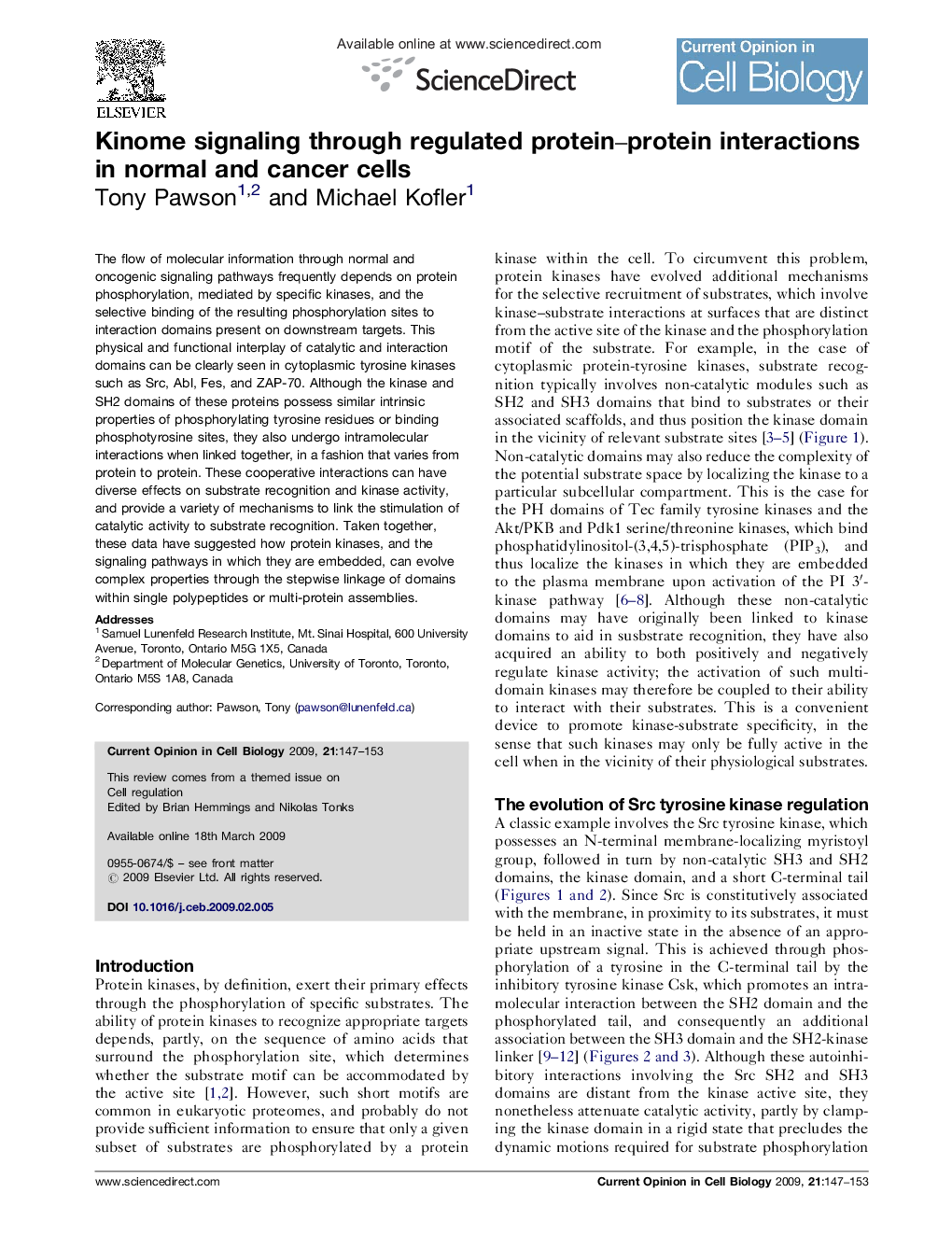| Article ID | Journal | Published Year | Pages | File Type |
|---|---|---|---|---|
| 2169924 | Current Opinion in Cell Biology | 2009 | 7 Pages |
The flow of molecular information through normal and oncogenic signaling pathways frequently depends on protein phosphorylation, mediated by specific kinases, and the selective binding of the resulting phosphorylation sites to interaction domains present on downstream targets. This physical and functional interplay of catalytic and interaction domains can be clearly seen in cytoplasmic tyrosine kinases such as Src, Abl, Fes, and ZAP-70. Although the kinase and SH2 domains of these proteins possess similar intrinsic properties of phosphorylating tyrosine residues or binding phosphotyrosine sites, they also undergo intramolecular interactions when linked together, in a fashion that varies from protein to protein. These cooperative interactions can have diverse effects on substrate recognition and kinase activity, and provide a variety of mechanisms to link the stimulation of catalytic activity to substrate recognition. Taken together, these data have suggested how protein kinases, and the signaling pathways in which they are embedded, can evolve complex properties through the stepwise linkage of domains within single polypeptides or multi-protein assemblies.
